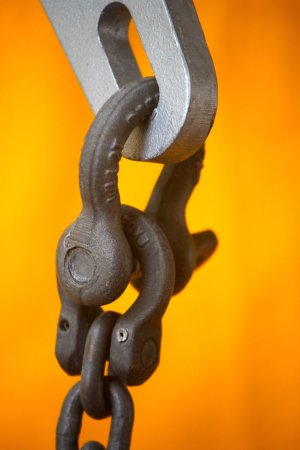Neeves
Well-Known Member
Two anchor deployed in a 'V' or fork can manage a wind that oscillates first in one direct ion then another. If you use one anchor the anchor will be constantly responding to the new tension angle, the seabed in which the single anchor is embedded will lose shear strength and the anchor can be prone to dragging. 2 anchors each orientated toward the 2 veer directions will be much more stable. it has nothing to do with an anchor being too small, nor they being inadequate - its very simply good seaman ship.
I note Noelex negative comment to use of 2 anchors what he omits to mention is that Rocna recommend a 33kg anchor for his yacht - and he uses a 50kg anchor with the hold of a 50kg Delta. A 33kg Rocna, I might suggest, could have the same hold as a 50kg Delta.
Deploying two reliable anchors might be unnecessary - but a yawing yacht is debilitating and a 'V or fork (+ a bridle) tames the movement
In an oscillating wind we would use 2 x aluminium 8kg anchors (each with the hold of a 15kg SHHP anchor), 6mm HT chain and snubbers (a bridle) capable of being extended to 30m each arm, for a catamaran with the windage of a 45' AWB, not much smaller than Noelex yacht.
If the anchorage permits shore lines are the 100% insurance.
Jonathan
I note Noelex negative comment to use of 2 anchors what he omits to mention is that Rocna recommend a 33kg anchor for his yacht - and he uses a 50kg anchor with the hold of a 50kg Delta. A 33kg Rocna, I might suggest, could have the same hold as a 50kg Delta.
Deploying two reliable anchors might be unnecessary - but a yawing yacht is debilitating and a 'V or fork (+ a bridle) tames the movement
In an oscillating wind we would use 2 x aluminium 8kg anchors (each with the hold of a 15kg SHHP anchor), 6mm HT chain and snubbers (a bridle) capable of being extended to 30m each arm, for a catamaran with the windage of a 45' AWB, not much smaller than Noelex yacht.
If the anchorage permits shore lines are the 100% insurance.
Jonathan


